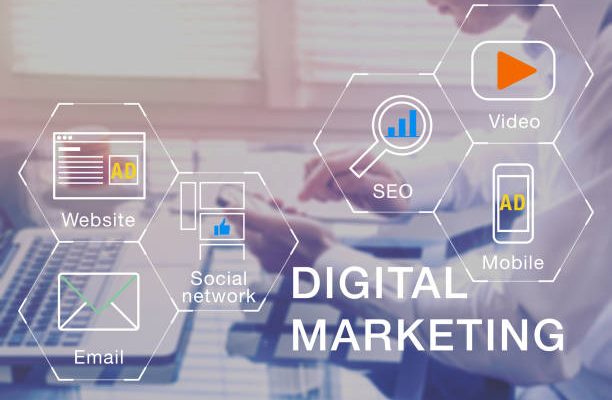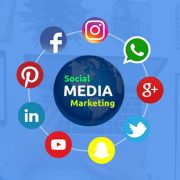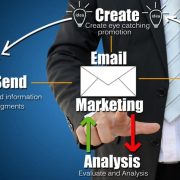What is Digital Marketing
Digital marketing is using digital channels to market products and services to consumers. This marketing uses websites, mobile devices, and social media. Search engines are also used. The advent of the internet in 1990 made digital marketing a popular option.
Digital marketing is based on the same principles as traditional marketing. It can be used to reach consumers and understand their behavior. Many companies combine digital and traditional marketing techniques in their strategies. However, implicit bias is a potential problem.
KEY TAKEAWAYS
Digital marketing is marketing to consumers via various digital channels, including websites, mobile devices, and social media platforms.
This type of marketing differs from internet marketing which is done exclusively on websites.
Digital marketing encompasses many areas, such as attracting customers via email and content marketing, search engines, social media, etc.
Digital marketers must figure out how to stand out in a digitally saturated world.
Digital marketing has its challenges.
Digital Marketing: How it Works
Marketing is the use of activities by a company to promote its products or services and increase its market share. If you want it to succeed, it requires advertising savvy, sales, and the ability to deliver goods to end users. These tasks are performed by marketers (professionals) either within a company or with marketing firms.
Traditional marketing strategies for corporations were radio, print, and television. These options are still available, but the internet has changed how companies communicate with consumers. Digital marketing was born. This type of marketing includes the use of social media, search engines, and apps. It also incorporates customer feedback and a two-way interaction between customers and the company.
Companies had to adapt their marketing strategies due to new trends and technology. In the early days of digital marketing, email was a popular tool. Search engines like Netscape became the main focus of digital marketing. This allowed businesses to tag and use keywords to be found. Companies were able to monitor consumer trends through the development of websites like Facebook.
Smartphones and other digital devices make it easier for businesses to market their products and services to customers. Research shows that most people prefer to use their smartphones to access the internet. It should not surprise that 70% of people make purchasing decisions on their phones before hitting the buy button.
Sources and receivers
Advertisers are often referred to as sources. Members of targeted ads are the recipients. Authorities often target specific and well-defined recipients, such as McDonald’s with shift workers or travelers.
Because these people make up a significant portion of its late-night business, the company used digital ads. McDonald’s encouraged them to download the Restaurant Finder App, targeting them with ads at ATMs, gas stations, and other websites its customers frequent.
Different types of digital marketing channels
Marketing was traditionally done via print (newspapers, magazines, and radio) and broadcast ads (TV or radio). These channels still exist today. Digital marketing channels continue to evolve. Here are eight common channels companies can use to increase their marketing efforts. Companies may employ multiple channels to boost their marketing efforts.
Website Marketing
All digital marketing activities revolve around a website. Websites are a powerful medium, but they also serve as the platform for executing various online marketing campaigns. Websites should clearly and memorably represent a brand and product or service. It should be mobile-friendly and fast.
Advertisement via Pay-Per-Click
Marketers can reach Internet users through pay-per-click advertising. Marketers can create PPC campaigns on Google or Bing, LinkedIn, and Twitter to show their ads to people searching for the product or service.
These campaigns can be segmented based on demographic characteristics, such as age and gender, or targeted at specific interests or locations. Google Ads is the most popular platform.
Content Marketing
Content marketing is about reaching potential customers by using content. A website usually publishes content. The content is promoted via social media, email marketing, and search engine optimization. Content marketing tools include ebooks, webinars, infographics, and podcasts.
Email Marketing
Email marketing remains one of the most efficient digital marketing channels. Email marketing is often confused with spam mail messages. However, this is not the purpose of email marketing. This type of marketing allows companies and individuals to reach potential customers or anyone interested in their brand.
Digital marketers often use all digital marketing channels to add leads and create customer acquisition funnels through email marketing to convert those leads into customers.
Social Media Marketing
Social media marketing campaigns are designed to build brand awareness and social trust. You can also use social media marketing to generate leads or as a direct market or sales channel. Tweets and promoted posts are examples of social media marketing.
Affiliate Marketing
Affiliate marketing has been around since the beginning of marketing. The internet has given new life to this traditional method of marketing. Affiliate marketing allows influencers to promote the products of others and receive a commission for each sale or lead. Affiliate programs for well-known companies such as Amazon pay millions monthly to sites that sell their products.
Video Marketing
YouTube is the most used search engine in the world. YouTube is a popular search engine that users use to find information, review and relax.
You can use several video marketing platforms to launch a campaign, such as Instagram and Facebook Videos. Companies have the best video success when integrated with content marketing and SEO.
SMS Messaging
Nonprofit organizations and companies also use text messages or SMS to inform customers about new promotions or offer opportunities. To spread positive information about their platforms, candidates for office use SMS messages to send out SMS message campaigns. Many text-to-give campaigns allow customers to pay directly or send a simple message.
Digital Marketing Key Performance Indicators (KPIs)
Remember that digital marketers use vital performance indicators (KPIs) like traditional marketers do. Companies can use KPIs to measure their long-term performance and compare them with others. This can include corporate strategies, financial goals, achievements, operational activities, or marketing campaigns.
Marketers can use these most popular KPIs to help companies reach their goals.
Blog Articles – Marketers may use this KPI to determine how often a company posts blog articles monthly.
Clickthrough rates: Companies may use this KPI to determine how many clicks occur for email distributions. This is the number of people who open an email and click on a hyperlink to make a purchase.
Conversion rate: This measure focuses on promotional calls to action. These programs require consumers to take specific steps, such as purchasing a product or service within a specified time frame. The conversion rate can be calculated by subtracting the number of successful engagements from the total requests received.
Social Media Traffic: This tracks how many people interact on corporate social media accounts. This can include likes, followers, views, shares, and other measurable activities.
Website Traffic Marketers may use this metric for tracking how many people visit a company’s website. Corporate management can use this information to determine if the site’s structure and design contribute to sales.




















Comments